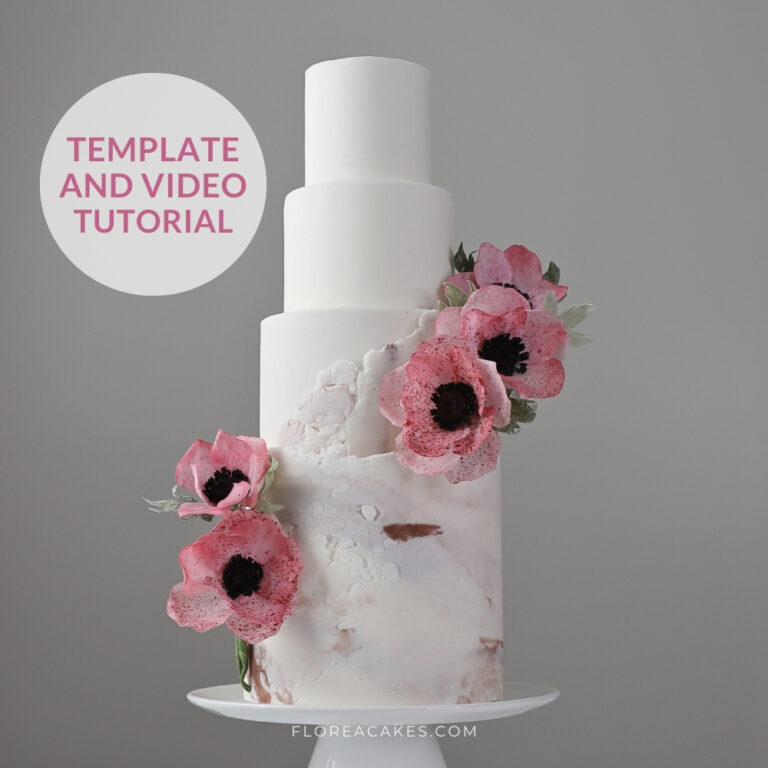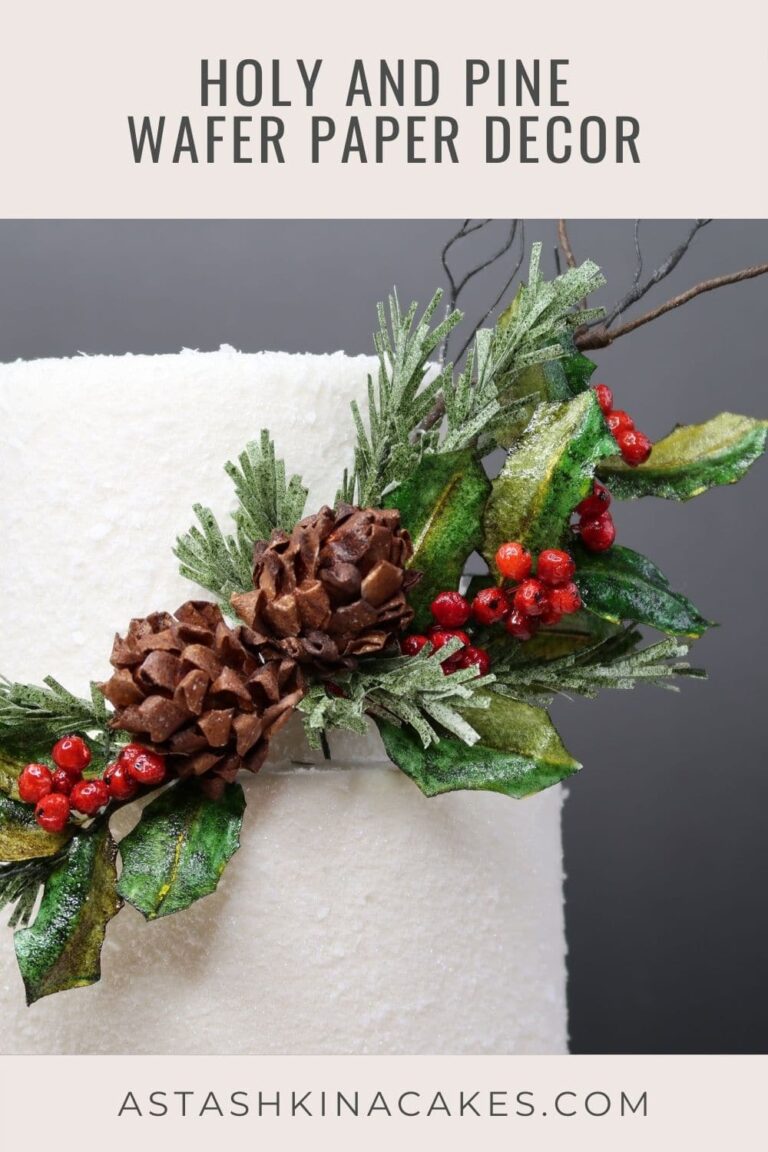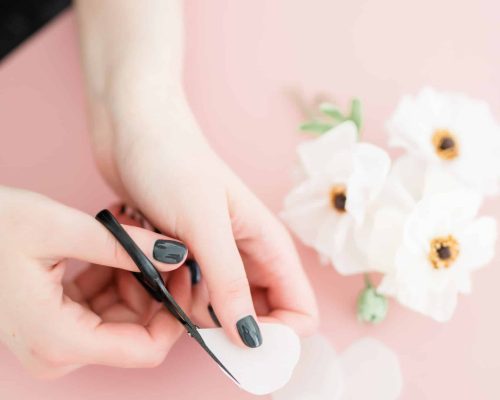Can you store wafer paper in the fridge?
Absolutely! Wafer paper is actually easier to handle than fondant or gumpaste—but there are a few things to keep in mind.
Most of the time, issues with wafer paper flowers aren’t caused by the flowers themselves, but by changes in your environment.
Here’s what you need to know:
If your fridge is very cold and dry, and your room is warm and humid, moving a cake straight from the fridge to the room is very likely to cause condensation. That moisture can make buttercream sweat, create droplets on fondant, and affect wafer paper or sugar flowers. The same thing can happen if the room is dry and the fridge is humid.
It’s not really about the fridge—it’s the sudden change in humidity that causes issues, and that’s what you need to watch out for.
So, what can you do? Keep on reading, and you’ll see—with a bit of care, you can totally make it work!
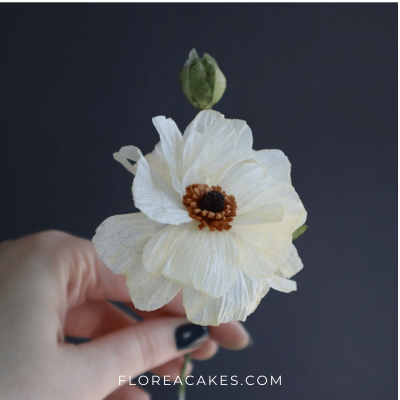
Preparing Wafer Paper Before Refrigeration
Make Wafer Paper Decorations in Advance
Create your flowers, bows, or ruffles 3–5 days ahead of time to give the conditioner mixture plenty of time to fully evaporate.
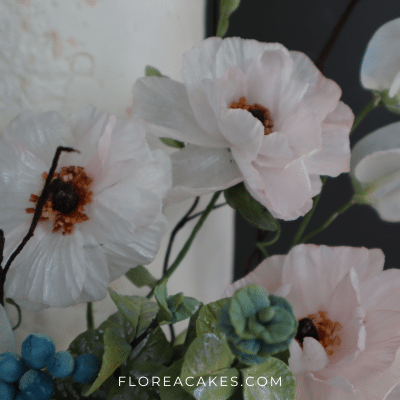
Adjust the Conditioner Formula
If you’re using my AC Tonic wafer paper conditioner, try reducing the amount of glycerin and replacing it with water. Glycerin is a humectant—it attracts moisture—which can cause your wafer paper to soften in the fridge.
Use Cornstarch for Added Protection
Lightly dust your wafer paper decorations with cornstarch. It helps absorb excess moisture and protects your decorations—especially important if you’re working in a high-humidity environment.
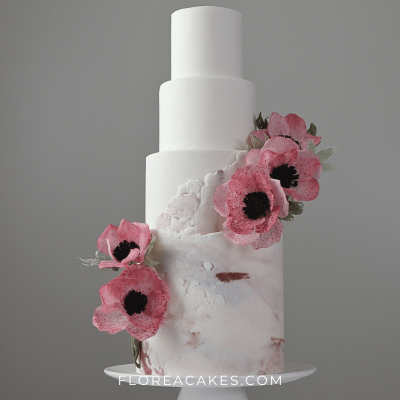
Storing Wafer Paper on Cakes in the Fridge
Before placing a cake with wafer paper decorations in the fridge, the key is to manage the humidity.
Check and monitor your humidity. Use a humidity checker (I use this one), and make sure the level is below 65% before storing your cake.
Take out or limit items that release moisture, like fresh produce (fruits, vegetables, herbs, and salad mixes) and open dairy products (like cottage cheese), as they can raise the humidity inside your fridge.
Use a cardboard box! If you live in a humid area—or just want to be extra cautious—place your cake inside a cardboard box before refrigerating. The box acts as a buffer by absorbing excess moisture and protecting your cake.
When removing the cake from the fridge, keep it inside the cardboard box for a while before opening it. This allows the temperature to adjust gradually, preventing condensation from forming on the cake itself.
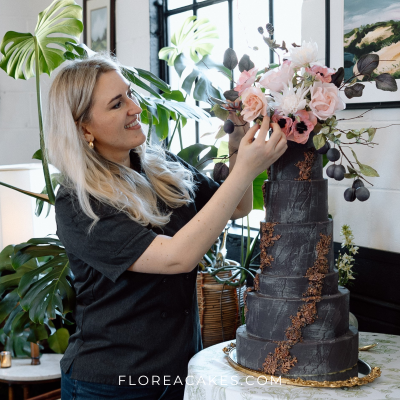
Using Commercial Fridges
Commercial refrigerators often have higher humidity levels than home fridges, so it’s best to avoid storing decorated cakes in them whenever possible.
If you don’t have another option, take extra precautions. Place your cake in a cardboard box and seal it tightly to protect it from moisture.
When I was renting a commercial kitchen, I’d place my decorated cakes in delivery boxes, then slide the boxes into large proofing bags (you can even use a clean trash bag) and seal them with tape. This created a protective barrier and helped keep humidity out.
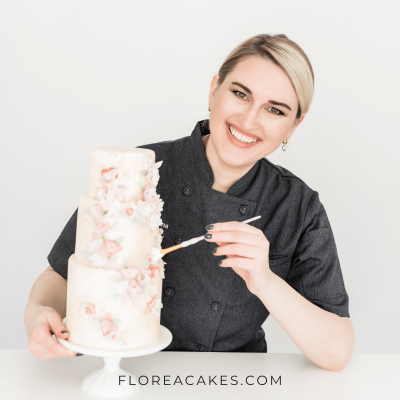
Are your wafer paper flowers wilted?
If your wafer paper flowers have been hit by humidity, rain, or moisture, don’t panic. The step-by-step video tutorial will show you exactly how to restore their shape and bring them back to life—fast.
You’ll learn the best wafer paper flower repair techniques, including how to use a mini steamer, heat gun, cornstarch, and wafer paper glue to fix the damage and prevent it from happening again.
Watch this tutorial on how to fix it.
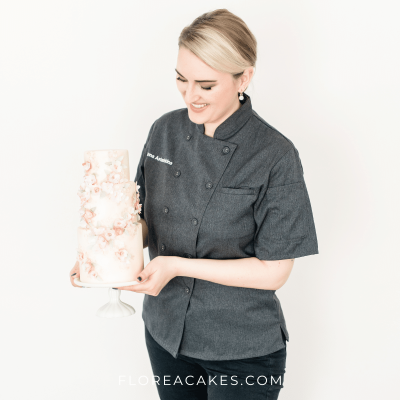
Final Tips on Storing Wafer Paper in the Fridge
Wafer paper can be safely stored in the fridge on buttercream, fondant, or ganache cakes as long as you manage humidity and temperature properly.
For the best results, make decorations in advance, adjust the wafer paper conditioner, and pack your cake in a box to avoid condensation. Taking these extra steps will allow you to safely refrigerate wafer paper flowers and decorations!
And as always, if you have any questions, leave a comment below.
